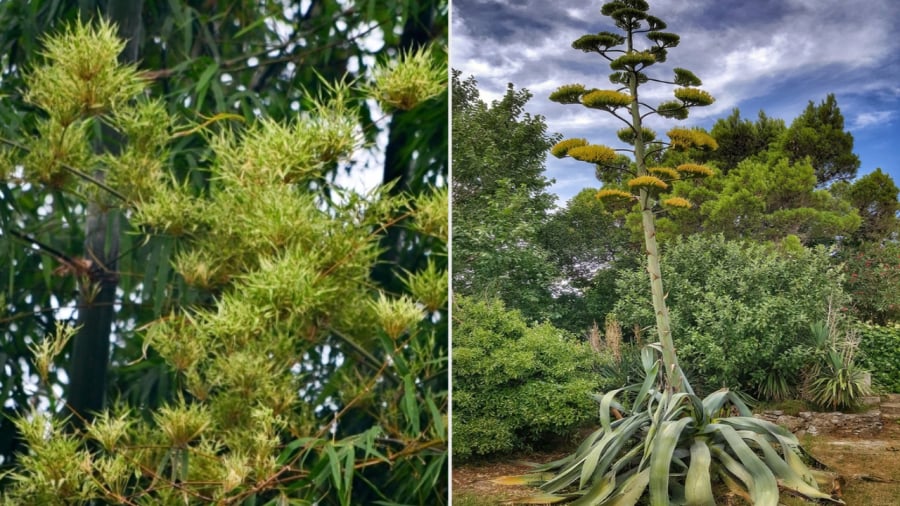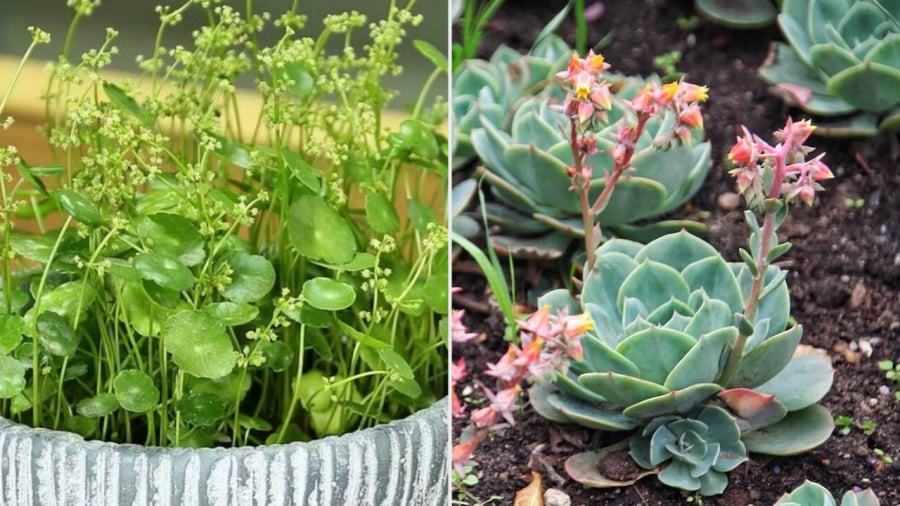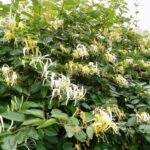Bamboo Trees
Bamboo trees are a familiar sight in Vietnam. In the past, bamboo was often grown in large clumps, serving as a protective barrier for villages. Today, bamboo is a popular choice for home gardens. Bamboo symbolizes strength, durability, and longevity. Having bamboo in your home is believed to bring good feng shui and positive energy.
While bamboo is well-known, many people are unaware that bamboo can flower. Bamboo is a unique plant that only blooms once every hundred years. Bamboo flowers when it is nearing the end of its life.
Bamboo is not particularly drought-resistant and is susceptible to pests and diseases. When faced with these challenges, bamboo can quickly wither. Before it dies, bamboo will gather all its remaining nutrients and energy to produce flowers. In a way, seeing bamboo flowering is a sign that the tree is about to conclude its life cycle.
Scientists have discovered that when there are significant environmental changes, such as droughts or earthquakes, bamboo may flower on a large scale and then die en masse. These environmental disturbances disrupt the growth of this plant species.

Bamboo tree (left) and Agave plant in bloom are signs that the plants are nearing their end. Wilting houseplants are considered a bad omen, bringing financial misfortune to families.
Agave Plant
The Agave plant, also known as the Thùa, is a houseplant with thick, fleshy leaves that is excellent for air purification. This resilient plant is easy to care for and highly drought-tolerant. Typically, the Agave plant rarely flowers. It takes many years for the plant to start blooming. However, when it does, it is not a good sign. The plant redirects its energy and nutrients towards flowering, ultimately leading to its demise.
In feng shui, a withering houseplant symbolizes misfortune and may foretell financial losses for the family. Therefore, when you see your Agave plant flowering, it is advisable to cut off the flowers to preserve the plant’s life.
Money Plant
The Money Plant, or Pilea peperomioides, features round, bright green leaves resembling coins. This plant is believed to bring good feng shui and is associated with wealth and prosperity. Its lush, vibrant leaves symbolize thriving finances and abundance.
The Money Plant can also flower, but its blooms are not particularly attractive or fragrant. The flowers grow in small clusters, resembling grains of millet. These flowers are not aesthetically pleasing and hold little value as ornamentals. Flowering can deplete the plant’s nutrients, affecting the health of its leaves.
When you see your Money Plant flowering, it is recommended to prune the flowers to redirect the plant’s energy towards producing lush, shiny leaves.

Money Plant (left) and Crassula ovata, also known as the Jade Plant, are popular houseplants. However, flowering can cause these plants to divert nutrients away from leaf production, leading to a decline in their appearance and health.
Jade Plant
The Jade Plant, or Crassula ovata, is a low-maintenance succulent with attractive foliage and a unique shape. The plant itself resembles a flower, and it can produce blooms. However, the flowers of the Jade Plant are not well-liked. Flowering requires a significant amount of water and nutrients, causing the leaves to gradually wither and the plant to decline.
People grow Jade Plants primarily for their attractive leaves. Not all Jade Plant flowers are aesthetically pleasing, so when you see your plant flowering, you can prune the blooms to allow the plant to redirect its energy towards healthy leaf growth.
Propagating Jade Plants is straightforward since they readily root from leaf cuttings. Simply choose healthy, robust leaves and place them in soil to grow new plants.
Information provided is for reference and exploration only.
“Planting the “lucky” betel vine: Placing it in this position will quickly enrich the homeowner.”
The peace lily is a stunning and elegant houseplant that is said to bring good fortune and prosperity to its owners. But who is this lucky plant best suited to, and where should it be placed in the home to maximize its money-attracting potential?






































